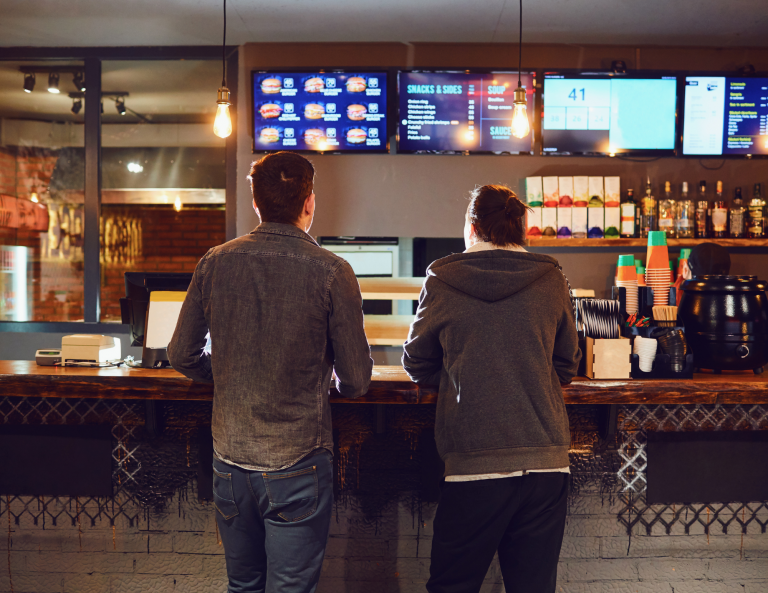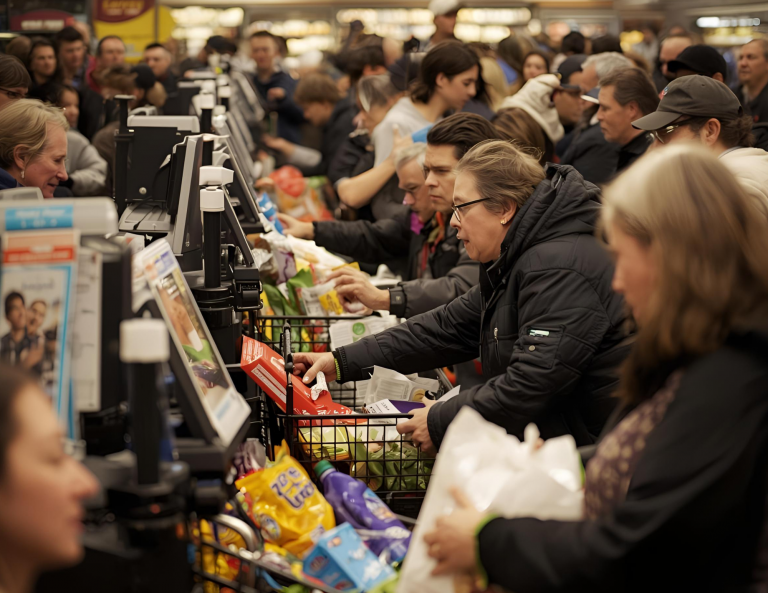In quick service restaurants, every second matters. Long lines cost sales, sour the guest experience, and create unpredictable pressure on staff. Walkbase QSR analytics links queue management in QSR with customer flow analytics to deliver faster service, smarter upselling, and measurable ROI. Rather than treating queue data as a single metric, Walkbase connects footfall, dwell time, heatmaps, and attribution to turn real-time insights into operational decisions — from staffing and layout changes to dynamic menu prompts that increase average check and boost customer loyalty. This isn’t just about shaving seconds off a wait; it’s about optimizing every guest interaction so your restaurant runs more profitably and consistently.
What Is QSR Analytics?
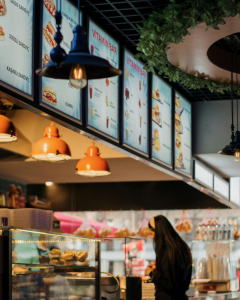 QSR analytics is the measurement and interpretation of customer flow, dwell time, line length, and engagement within quick service environments. It goes beyond point-of-sale reports (which tell you what was bought) to answer how customers move, where they pause, and what influences purchase behavior while they’re still in the restaurant.
QSR analytics is the measurement and interpretation of customer flow, dwell time, line length, and engagement within quick service environments. It goes beyond point-of-sale reports (which tell you what was bought) to answer how customers move, where they pause, and what influences purchase behavior while they’re still in the restaurant.
Where basic POS and manual counts provide lagging indicators, Walkbase delivers real-time, in-store analytics for restaurants: live queue length, average wait, kiosk engagement, and heatmaps of high-traffic zones. These signals feed operational triggers — for example, flagging when a register needs an extra cashier, or when digital menu content should promote an upsell because dwell time is high.
Because this data is tied back to outcomes, we can measure attribution: Did that promotional message shown during a 90-second dwell time actually increase combo purchases?
If you want a primer on why measuring foot traffic matters for retail and restaurants, see our piece on footfall analytics and why it matters.
Why Queue Management in QSR Is Critical
Reducing Wait Times in QSR
Long lines discourage customers, reduce throughput, and shift guest sentiment from neutral to negative in minutes. Queue management in QSR powered by analytics helps operators:
- Monitor real-time line length across registers and the drive-thru.
- Automatically send alerts or open additional lanes when thresholds are reached.
- Reassign staff proactively rather than reactively.
This proactive approach reduces peak congestion and evens out service capacity, resulting in shorter, more predictable waits — which preserves sales and improves repeat visits.
Turning Queue Data Into Revenue and Restaurant Operations Efficiency
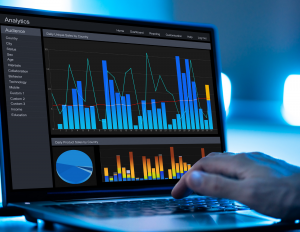 Queue analytics isn’t just about speed — it’s a revenue lever. When operators map where guests pause, they can place kiosks, digital menu boards, and product prompts in those micro-moments to influence choices. For example:
Queue analytics isn’t just about speed — it’s a revenue lever. When operators map where guests pause, they can place kiosks, digital menu boards, and product prompts in those micro-moments to influence choices. For example:
- Place high-margin add-ons on screens visible during a 60–90 second dwell to increase attach rate.
- Use dynamic menu content: If dwell spikes at lunch, feature combo upgrades or time-limited offers.
- Tie queue signals to kitchen pacing: slow queue movement can trigger simplified items or batch-cooking to recover throughput.
All of this feeds into restaurant operations efficiency: fewer service breakdowns, better labor utilisation, and measurable lifts in average ticket and conversion.
Using Customer Flow Analytics for Operational Efficiency
Customer flow analytics identifies where customers bottleneck — at the counter, the kiosk bank, the condiments station, or the drive-thru window. Walkbase creates visual heatmaps and flow-path reports that reveal patterns operators can act on immediately.
Practical uses include:
- Layout optimization: Move kiosks, signage, or handoff counters based on observed traffic patterns to reduce cross-traffic and friction.
- Shift scheduling: Align staff levels to real footfall rather than historical guesses; add or reassign staff five to ten minutes before predicted peaks.
- Digital placement: Position promotional content where it will be seen during extended dwell time — not simply where it “looks good.”
Data-driven QSR insights enable small, targeted changes with outsized impact. A minor tweak to kiosk placement or a timed promotional push during high-dwell periods can increase throughput while improving perceived service speed.
If you’re interested in how smart retail technology drives better business decisions, our smart retail guide explores this in the retail context and highlights its relevance to restaurants.
Walkbase in Action — Optimizing Quick Service Restaurant Performance
Walkbase is designed to be the measurement and attribution engine behind these changes. Here are three illustrative examples of how in-store analytics translate to results:
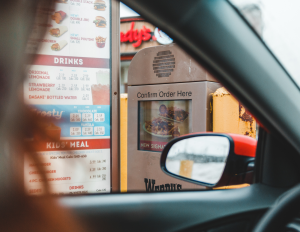 Queue measurement → 20% shorter wait times
Queue measurement → 20% shorter wait times
By instrumenting registers and drive-thru lanes with real-time queue metrics, operators can trigger extra lanes or staff reallocation the moment a queue threshold is hit. In practice, many deployments report sustained reductions in peak wait times — often in the range of 15–25% — by smoothing staffing and opening fast-response lanes.
Heatmaps → better kiosk engagement
Heatmaps reveal where guests pause long enough to interact with kiosks or examine menu boards. Using those insights, operators reposition kiosks into higher-engagement zones and modify surrounding signage. The result: higher kiosk adoption and fewer counter bottlenecks as guests self-serve more effectively.
Attribution analytics → larger basket size
Walkbase ties in-store exposure (dwell and digital impressions) to transactional outcomes. When a limited-time combo is promoted to guests during a known dwell window, Walkbase attribution shows whether those impressions convert into higher attach rates. That clarity turns marketing experiments into repeatable, revenue-generating tactics.
For more strategies on increasing in-store sales through thoughtful placement and activation, check out our retail sales strategy guide.
The Future of QSR Analytics and Queue Management
The next wave of QSR analytics is about real-time personalization and tighter system integration. Imagine digital menu boards that adapt offers based on current dwell time, kitchen load, and time of day — surfacing the best upsell at the exact moment it’s most likely to convert. Or a system where queue length automatically reprioritizes kitchen prep, adjusting order batching for consistent throughput.
Walkbase is built to be that measurement and attribution engine: a unified source of truth for footfall, dwell, heatmaps, and promotional impact. With AI-driven insights layered on real-time data, operators will be able to personalize offers, staff smarter, and orchestrate the full guest journey from arrival to handoff.
Turn Lines Into Loyalty
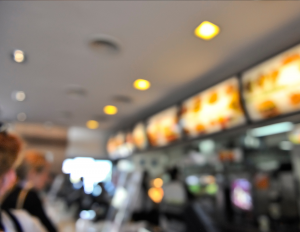
QSR analytics and queue management in QSR do far more than shave seconds from a line; they optimize customer experience, increase upsell opportunities, and deliver measurable improvements in restaurant operations efficiency. Walkbase connects customer flow analytics, real-time queue measurement, and attribution so operators can make confident, data-driven decisions that boost revenue and loyalty.
Ready to see how Walkbase can optimize your quick service restaurant performance? Learn more about Walkbase QSR solutions: https://www.walkbase.com/industries/qsr
